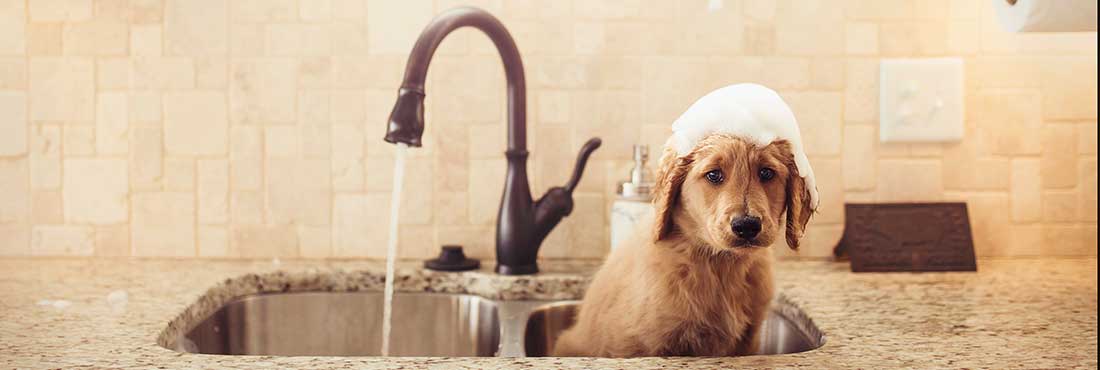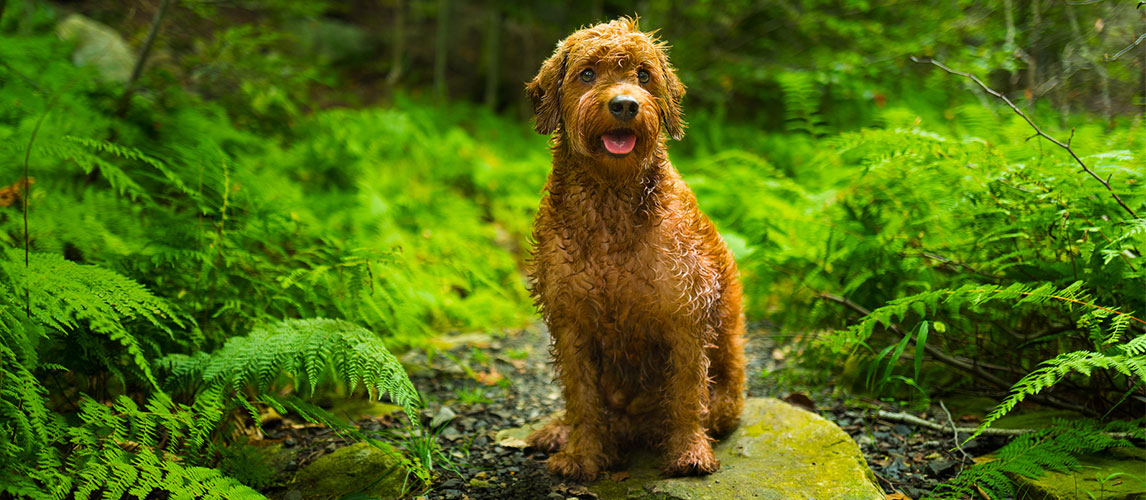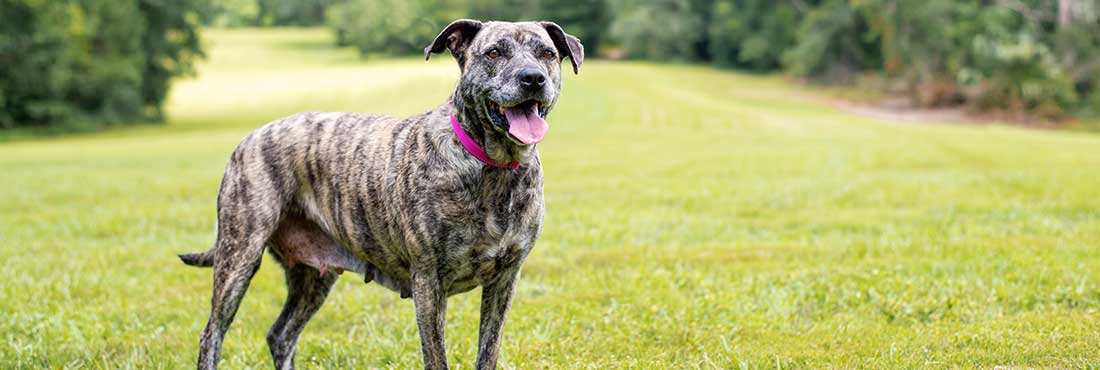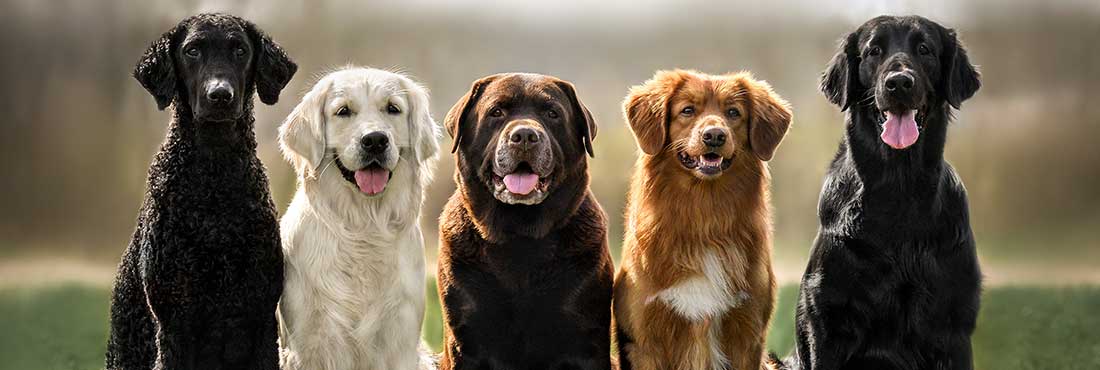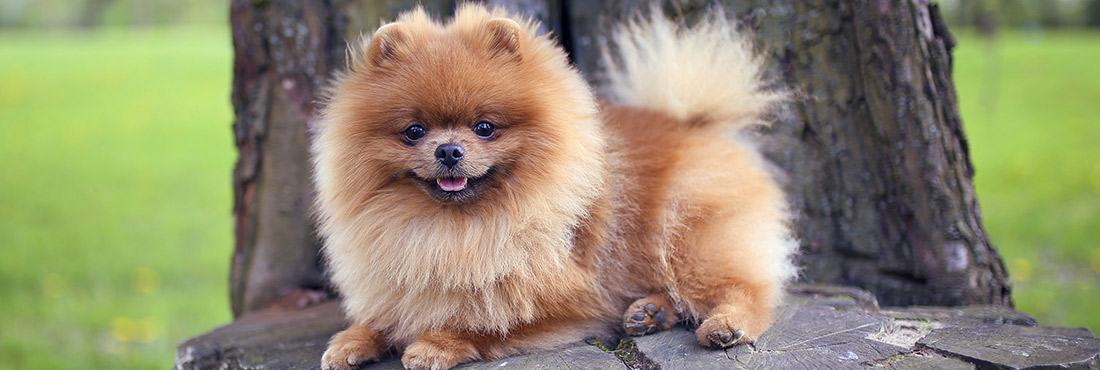Adorable name. Adorable dog. Goldendoodles are one of the most popular designer dogs and are famous for their sweet nature and, more prominently, their luscious coat. So, since both parent breeds have opposite shedding qualities, you may wonder how much their cross-breed pups will shed.
Below is everything you need to know about Goldendoodles and how much they shed. Be sure to comb through the information carefully, as there are some crucial points to note about these dogs’ shedding tendencies.
What is a Goldendoodle?
A Goldendoodle is the beautiful offspring of two popular dog breeds, the pure Golden Retriever and a standard or miniature Poodle. Like most crosses, this pup will not be one singular dog breed and is considered a mixed-breed/hybrid.
Since the Golden Retriever can be bred with varying sizes of Poodle, you can expect their pups to also vary in size according to the height and weight of the parent Poodle.
How Much do Goldendoodles Shed?
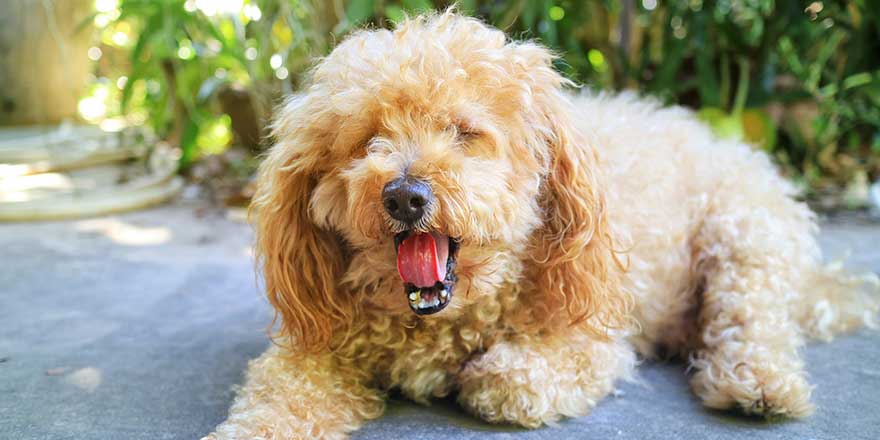
One detail worth exploring before we get started is the types of Goldendoodle you’re likely to encounter. This is because the amount of shedding depends completely on generation and coat type. Below you can find everything about each generation and how much these Goldendoodles shed.
Goldendoodle Generation & How it Impacts Shedding
F1 – Golden Retriever & Poodle
The F1 Goldendoodle is the first generation doodle. This is the classic mix between both the purebred Golden Retriever and Poodle. These pups will likely develop a curly coat, like their Poodle parent breed, in one of many shades of cream/gold.
Since these pups are 50% Golden Retriever, they are the heaviest shedders out of all generations of doodles. However, since their Poodle parent’s genes are present, they will not be classed as heavy shedders overall. Instead, they will be low to moderate.
F1B – F1 Goldendoodle & Poodle
The F1B Goldendoodle results from breeding an F1 Goldendoodle with a purebred Poodle. The F1B pup can either have a short, curly coat or a longer one. These pups can also come in more coat colors.
These dogs shed very little compared to the other variations of Goldendoodle. Additionally, they are considered the best option for aspiring Goldendoodle dog owners suffering from allergies. This is because only 25% of their genes belong to Golden Retrievers and will inherit very little of their shedding qualities.
F2 – Two F1 Goldendoodles
These dogs are known as second-generation Goldendoodles. Their parents are made up of two first-generation Goldendoodles and are very similar. Most of these dogs shed moderately, but there are some exceptions. It is unknown exactly how much an F2 Goldendoodle will shed, but they are generally considered suitable for those who suffer from moderate allergies.
F2B – F1 Goldendoodle & F1B Goldendoodle
Known as the second generation backcross, this Goldendoodle puppy is achieved when breeding an F1 with an F1B. These pups are not as common as the other generation of dogs but still well-loved by Goldendoodle enthusiasts.
Interestingly, these dogs can come in various colors, including reds, creams, and apricots. Moreover, much like the other Doodles featured here, they are considered low-shedders.
What Can Trigger Shedding?
If you’ve got yourself a new fur friend recently and are wondering ‘why is my Goldendoodle shedding?’, there are a few things you need to know before you pass it off as a genetic trait.
A dog’s coat will shed for more reasons than one. Genetics is key, but several environmental and external factors can make a Goldendoodle shed. If you’ve found a sudden change in shedding, consult your vet for further advice. Generally, some of the culprits of sudden shedding can be found below.
Allergies & Other Skin Conditions
Believe it or not, skin allergies are common in dogs and can cause excessive shedding. In severe cases, dogs can lose fur and cause abrasions across their skin that can invite harmful bacterial infections and/or parasites. The allergic reaction can be triggered by several things, including food, pollen, household cleaners, aerosols, shampoos, etc.
Stress & Anxiety
Sadly, dogs are not immune to emotional distress either. Some dogs can even suffer separation anxiety, which can trigger excessive shedding and poor behavior. Stress can be triggered by various aspects such as moving home, travel, losing a loved one, a new addition (new pet or baby), etc.
Poor Nutrition
Feeding your dog the bare minimum, inappropriate volumes, or even ‘people’ food can result in significant shedding. This is because they are not receiving the appropriate nutrition, including the necessary protein, mineral, and vitamin content for a healthy coat.
Excessive Bathing
Bathing can be good for your pooch and prevent matting, tangles, and assist coats during shedding seasons, but too much of something can be bad.
Too much bathing, especially with non-recommended shampoos and conditioners, can cause the fur to become loose and fall out. To add, the wrong product can also trigger allergic reactions that will on exacerbate things.
The Goldendoodle Puppy Coat
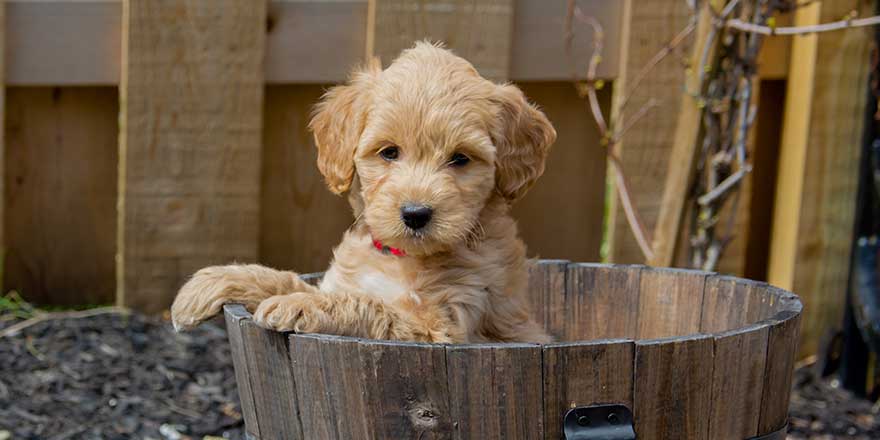
It may surprise you to learn that before a Goldendoodle puppy reaches a certain age, it will have a completely different coat known as a ‘puppy coat’. Between 5-8 months of age, this coat will begin to change, making way for their adult coat.
When you start to observe excess shedding when they are a puppy, it’s important to groom them regularly. This is because the adult hair will begin to grow and the puppy hair will simultaneously become detached. Create a brushing routine that effectively removes the loose hair to prevent it from tangling and matting with the adult coat.
Predicting Coat Types
Since Goldendoodle puppies are likely to develop different coats, you may be wondering if there are ways you can predict what type they will have. Generally, their coat will resemble one or both of their parent breeds, depending on your generation.
Some sources state that genetic testing can be done to determine the possible coat type your furry friend will develop. However, if you’ve just got your pup and are unsure how to identify what coat they will have, there are a few tell-tale signs.
Simply observe your puppy’s snout/facial hair and look for the following:
- A puppy likely to have a curly coat will have a prominent mustache.
- Puppies with short and neat hair around their snout will develop a straight coat.
- If your puppy has a shaggy beard, it will develop a wavy coat.
Managing Goldendoodle Shedding
There are many ways to manage your Goldendoodle’s shedding, all of which are detailed below.
Diet & Supplements
A high-quality diet will work wonders for any dog, so it’s important that you choose a diet that’s fit for your Goldendoodle. This is because low-quality food will not provide the essential nutrients to keep your dog’s skin, coat, and body healthy.
Dogs with sensitive and dry skin can benefit hugely from a good fish oil supplement. You can buy these in many forms, including tablets, chews, or even a liquid you can mix into your dog’s kibble or wet food. However, buying these supplements can be avoided if your dog’s food already contains suitable omega-fatty acids. If you’re considering supplements to improve your Goldendoodle’s skin and coat health, consult with your vet before ensuring that it is necessary.
Not to mention, Goldendoodles can develop food allergies that result in excessive shedding and poor skin health. This may be a little more complicated to tackle as it will take some time to identify what specific ingredients are causing the reaction. To begin, it’s important to see your vet. From here, they will likely put your pup on a limited ingredient diet before moving on to what is known as a trial and error type diet.
Bathing
Since Goldendoodles can have an allergic reaction to bathing products, it’s crucial that you use a gentle shampoo when bathing them. Avoid human shampoo and ensure your chosen product is specifically for dogs with sensitive skin.
Brushing
Brush your Goldendoodle weekly or biweekly. It’s important to stay on top of your brushing habits to avoid tangles and matting, especially if they have a curly coat type. When your puppy Goldendoodle sheds to make way for the adult fur, ensure you are doing a thorough job so that the new hair doesn’t become tangled with the puppy hair.
Keeping Your House Fur-free
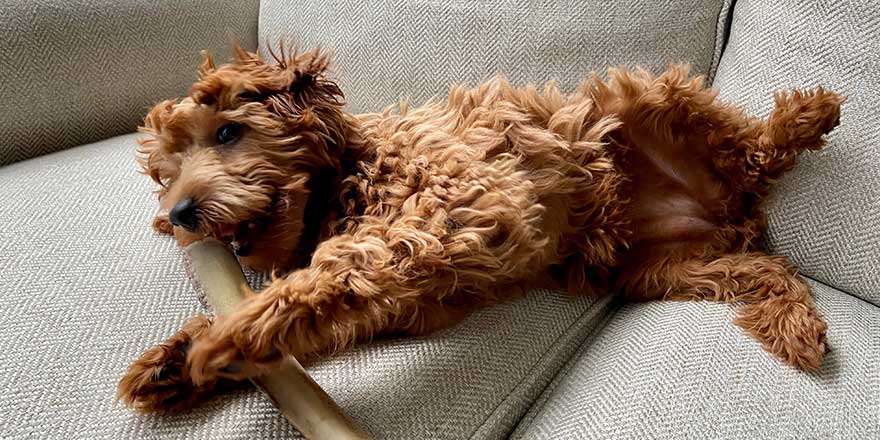
When Goldendoodles shed, it’s typically not a lot. However, during seasonal shedding or times when they shed more than usual, there are plenty of things you can do to ensure your home stays relatively dog hair-free. These methods are particularly useful if you suffer from allergies and want to reduce the risk of an allergic reaction.
Wash Bedding and Toys
Make sure to regularly clean your dog’s toys and bedding to eliminate dander and saliva since these also contribute to pet allergies.
Vacuuming
Daily vacuuming will eliminate dog hair around your home and is one of the most effective methods against heavy shedding dogs. If you suffer from allergies, it may be worth replacing carpets if you haven’t already done so. This is because a lot of pet hair and dander and saliva become embedded.
Air Purifier
This is a great addition for those that also suffer from pet allergies. An air purifier will eliminate airborne particles to minimize allergic reactions.
Have a Designated Grooming Zone
Groom your dog in a place that’s easy to clean and won’t allow hair to embed in cracks and crevices. For example, use a bathroom or back yard as these are also well ventilated.
Frequently Asked Questions
Goldendoodle puppies will begin to shed hair around 5-8 months of age but it can take a while for their adult coat to grow in.
Many Goldendoodle owners will vouch that these dogs are low maintenance which makes them great for first-time owners. However, they will still require pet grooming like most other breeds.
It is not recommended to shave a dog down unless its fur is completely matted. Clipping also won't influence how much a dog sheds. You should always maintain a dog's coat but clipping it won't prevent rogue hairs from releasing from the coat.
Most would consider Goldendoodles hypoallergenic. However, no dog is truly hypoallergenic but since these canines are low-shedding dogs they make a suitable pick for those with mild allergies.
Most generations of Goldendoodles are low shedders but according to the list above, F1 Goldendoodle shedding is the lowest. It is important to know that no dog is considered non-shedding.
Yes. Retrievers are moderate to heavy shedders. Their cross-breed offspring will also carry the shedding qualities of their Poodle parent which will help to reduce shedding.
Due to their smaller stature, a mini Goldendoodle will shed significantly less than a standard one.

